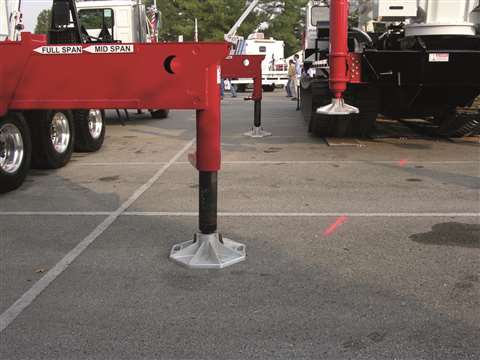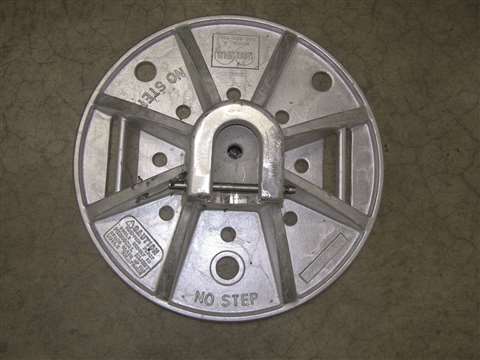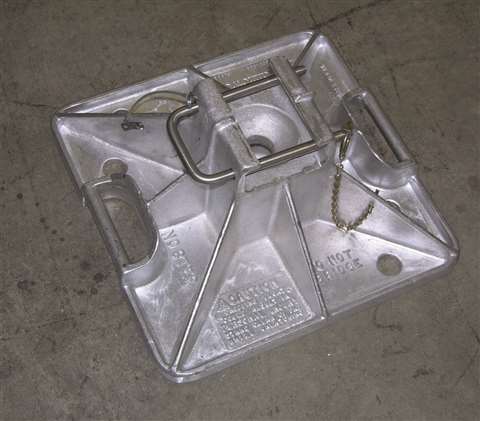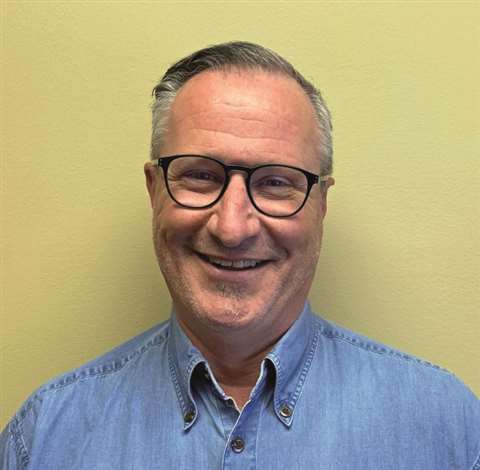Choosing the right stabilization pad
11 October 2021
Mike Blaser discusses what to look for in stabilization pads.
Crane pads are specifically designed to provide stability when lifting a load. They are critically important safety tools used with a crane outrigger and are attached directly to the ram end of the outrigger becoming a “foot” for the crane. The outrigger stability system is designed to make the overall footprint of the crane larger. Crane pads are then attached to the ram and placed on the ground under the equipment’s outrigger.
 Crane outrigger pads are attached directly to the ram end of the outrigger becoming a “foot” for the crane.
Crane outrigger pads are attached directly to the ram end of the outrigger becoming a “foot” for the crane.
The point of contact between a crane pad and the ground is relatively small. Because of the pressure on the outrigger, the ground underneath could either move, be displaced or collapse if a crane pad is improperly sized. Stability is dependent on both the equipment’s footprint and its center of mass. Important factors that serious crane pad manufacturers engineer into design include the maximum pad load for each outrigger specified by the crane manufacturer and the desired floatation, expressed in pounds per square inch.
Crane pads are meticulously designed in a variety of sizes, attachment methods and shapes, and it is critical that these factors are determined by an engineered method. Standard pad design should provide for 100 percent of the maximum pad load applied in a bridge condition where the unsupported surface area of the pad equals 56 percent of the total pad area. Materials that enhance or compliment the strength and durability of the crane itself are critical. Therefore, crane pads should have the attachment head and pad incorporated into a single casting. Best-of materials such as Aluminum Magnesium alloys are lightweight and ease operator fatigue, yet are extremely strong, providing exceptional dimensional stability. It is impossible to look at a photo or drawing to determine that a particular pad will work on your crane. Actually, known factors from the crane manufacturer must be diligently incorporated into the design.
 Qualified crane pad suppliers use calculated methods, supply OEM crane manufacturers with pads for new cranes and employ purposeful methods to determine solutions.
Qualified crane pad suppliers use calculated methods, supply OEM crane manufacturers with pads for new cranes and employ purposeful methods to determine solutions.
Not to be trusted to a job-shop, qualified crane pad suppliers use calculated methods, supply OEM crane manufacturers with pads for new cranes, and employ purposeful methods to determine solutions.
Following are the most frequently asked questions regarding crane stabilizer pads:
I am a serious buyer of critical crane components. Who can I best qualify to meet our engineered expectations?
Most major crane manufacturers turn to trusted and tested manufacturers who have developed pads over many years to engineer specific crane pads and other hardware based on each specific OEM application.
Why do crane OEMs tend to outsource this critical crane component?
To save time and money. Our approach is to provide a turnkey solution to your needs by incorporating the pad and attachment head into a single casting, delivered complete and on time. This method eliminates the necessity for the OEM to utilize costly production time fabricating steel pads or adapters to fit forged aluminum bases. By allowing us to design the pontoon from the ground up, you get a pad that is exactly right for your application.
What if we are developing a completely new product or are unable to find an existing crane pad that fits?
For each application, a pad is selected to meet your load and floatation requirements. If we do not already have an implementation that fits your needs, we will use solid modeling to design an Almag pad for your specific OEM application.
 Crane pads are meticulously designed in a variety of sizes, attachment methods and shapes, and it is critical that these factors are determined by an engineered method.
Crane pads are meticulously designed in a variety of sizes, attachment methods and shapes, and it is critical that these factors are determined by an engineered method.
Why Almag?
It has the highest strength to weight ratio of any as-cast aluminum. This reduces operator fatigue and stress when handling pads and machine capacity is maximized because the total weight is lowered. Sauber crane pads are a tried and true product. We have developed pads for most major crane manufacturers in the United States and have a wide variety of replacement pads available. We offer a three-year guarantee, which is important in terms of additional customer value.
Other important attributes to make sure of is that the entire pad is non-rusting, including stainless steel fasteners.
Sauber assures that cast pads are the same every time, free of manufacturing variances. A customer’s part number, logo or other identification can be cast directly into the pad for life-time identification.
By outsourcing your crane pads, you eliminate plant utilization required to produce or upfit outrigger pads and reduce logistic headaches from coordinating manufactured and purchased components timelines. Solids drawings allow integration into your designs, allowing your engineering to concentrate on core competencies. A single vendor providing all product, support and technical data reduces communication and acquisition costs. With the ability to handle aluminum extrusions and all types of castings, Sauber is capable of being your OEM supply powerhouse.
It is important to make sure you are doing business with reputable company. Sauber has a record of providing reliable, on-time delivery, allowing you to concentrate on running your business unit and not following up on vendors.
 Mike Blaser
Mike Blaser
Mike Blaser has been the sales and marketing manager for Sauber Manufacturing for 24 years.
STAY CONNECTED


Receive the information you need when you need it through our world-leading magazines, newsletters and daily briefings.



